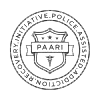
By LYLE R. FRIED, CAP, ICADC, CHC In Addiction Recovery
Posted April 27, 2018
Overcoming addiction is no easy task, even with treatment. Addiction typically involves underlying emotional or mental issues, and substance abuse even changes the brain, making long-term sobriety a challenge.
The National Institute on Drug Abuse(NIDA) reports relapse rates between 40 and 60 percent, similar to other chronic diseases.
The Substance Abuse and Mental Health Association (SAMSHA) states that for best possible results, addiction treatment must be holistic. Holistic treatment promotes the healing of not only the body, but the mind and spirit as well. Experiential hands-on treatments have emerged utilizing this approach, including activities like creating art or working with horses.
Adventure therapy is another form of treatment that is already showing promising results. Research has found that it positively impacts relationships, leadership, and self-esteem, all factors that increase the chances an individual will maintain sobriety.
What Is Adventure Therapy?
Adventure therapy involves games, trust activities, high and low challenge courses, and adventure and wilderness based programming. It’s typically outdoors, but indoor adventure therapy is also possible. These activities are facilitated by mental health professionals to engage participants on cognitive, affective, and behavioral levels.
Activities vary and may include rock climbing, canoeing, sailing, ropes courses, mountain biking, backpacking, zip lining, expeditions, plus ice breaker and trust building games.
Therapy typically begins with a thorough evaluation of the patient so that treatment can be personalized to address substance abuse, co-occurring mental health disorders, and other underlying issues.
Throughout the program (often around two months in duration), therapists provide in-the-moment counseling on healthy coping mechanisms and self-soothing strategies. Ultimately, the experience is intended to aid in self-discovery and increase confidence and social skills. It can also improve relationships and give participants a sense of renewed hope.
Plus, participants discover ways to have fun and achieve a “natural high” without the use of alcohol or illicit substances.
According to the Association for Experiential Education, adventure therapy:
- Uses kinesthetic (active) methodology to engage clients and establish a parallel process between the client’s life experience and therapeutic experience. This enhances the transfer of learning from therapy to the client’s real life.
- Focuses on therapeutic goals, so this is not adventure solely for the purpose of recreation, physical health, or education.
- Gets the client involved in goal setting, personal decision-making, and achieving outcomes. The client has a dynamic relationship with his or her therapist due to active involvement and shared experiences.
- Incorporates dynamic use of the environment and often of nature. This may involve exposure to unique environments or environments with adaptive dissonance for the client.
This type of therapy is often used in combination with traditional rehabilitation, and it’s especially popular for teens struggling with substance abuse issues.
What Is Adaptive Dissonance?
Adaptive dissonance refers to someone having conflicting thoughts. An example of adaptive dissonance is when an individual encounters a challenging rope course. He may believe it’s dangerous and impossible, while the therapist explains that it’s safe and doable. Because the client is unwilling to accept both as true, he’s motivated to resolve the dissonance, likely by attempting the ropes course.
Once the participant attempts and completes the rope course, he will be elated. After debriefing and discussion with the facilitator, he’ll recognize that the task wasn’t actually so dangerous and that he was capable of completing it. In the future, this understanding can be applied to other areas of life as well.
Gradually, adaptive dissonance is reduced, and it’s likely that the participant’s self-concept and relationships will improve.
If you or a loved one is considering adventure therapy, you should expect to face challenges that will push you outside of your comfort zone. The goal is to build your confidence and demonstrate that you can accomplish things you never thought possible, and you can accomplish them without drugs or alcohol.
Does Adventure Therapy Work?
A number of studies indicate that the short-term effects of adventure therapy are greater than that of no treatment and other forms of treatment. Follow up studies indicate that a substantial number of participants maintain these results, including those with mental health issues and substance abuse.
However, adventure therapy is an emerging treatment, and more research is needed to show exactly how it impacts substance abuse disorders. Preliminary research suggests that it can be effective, and it addresses underlying issues such as low self-esteem and poor social skills. Resolving these issues increases the likelihood of long-term sobriety.
If traditional treatments have been ineffective for you or a loved one, especially your adolescent or teenager, adventure therapy provides an exciting and innovative alternative.
To inquire how The Shores Treatment and Recovery uses Adventure Therapy call 1-888-249-2590 to speak to one of our specialists or click here.













